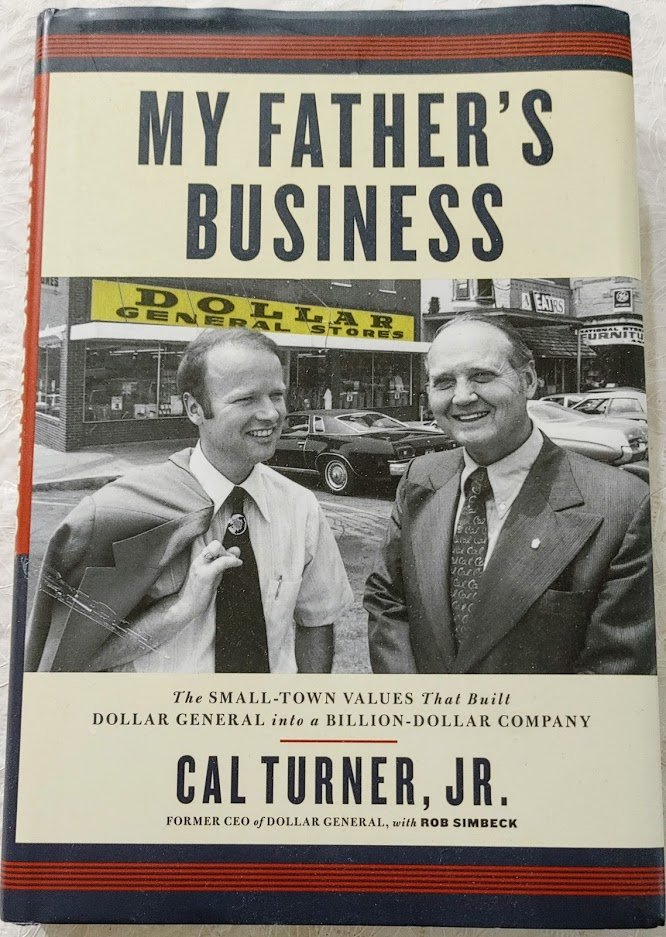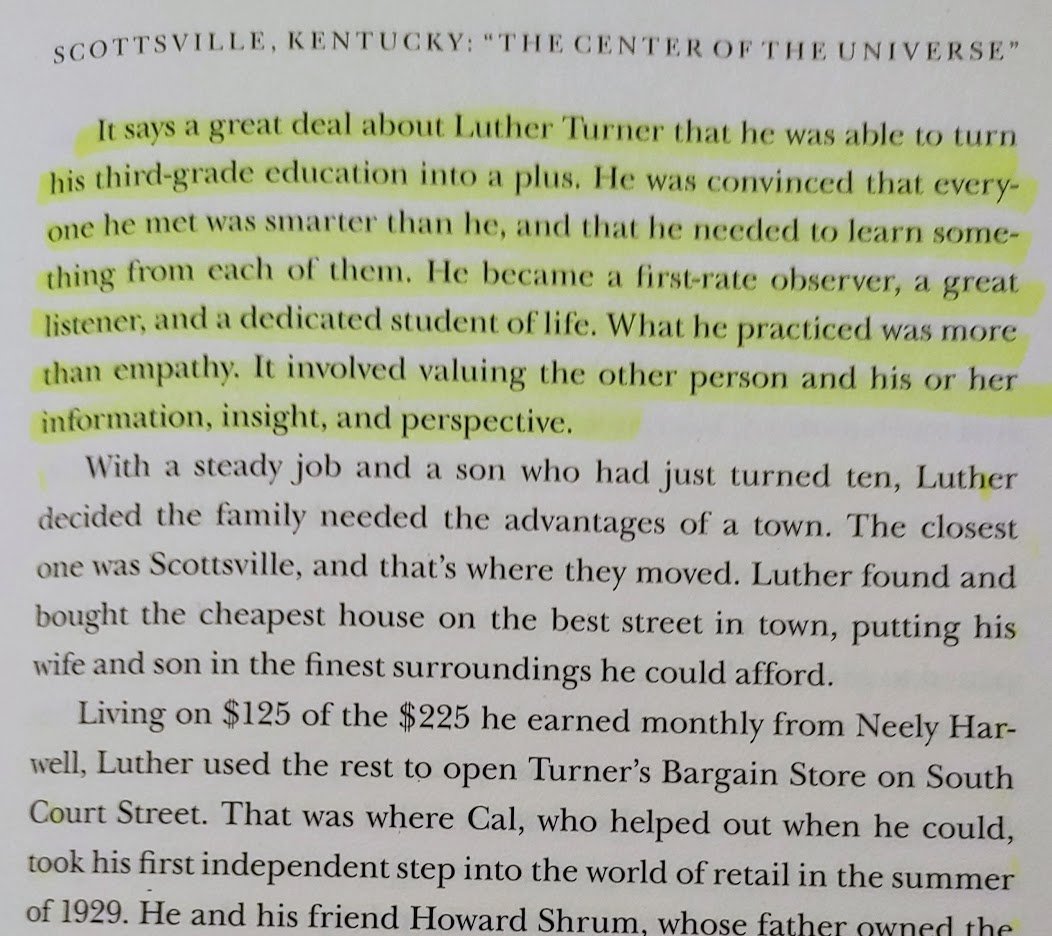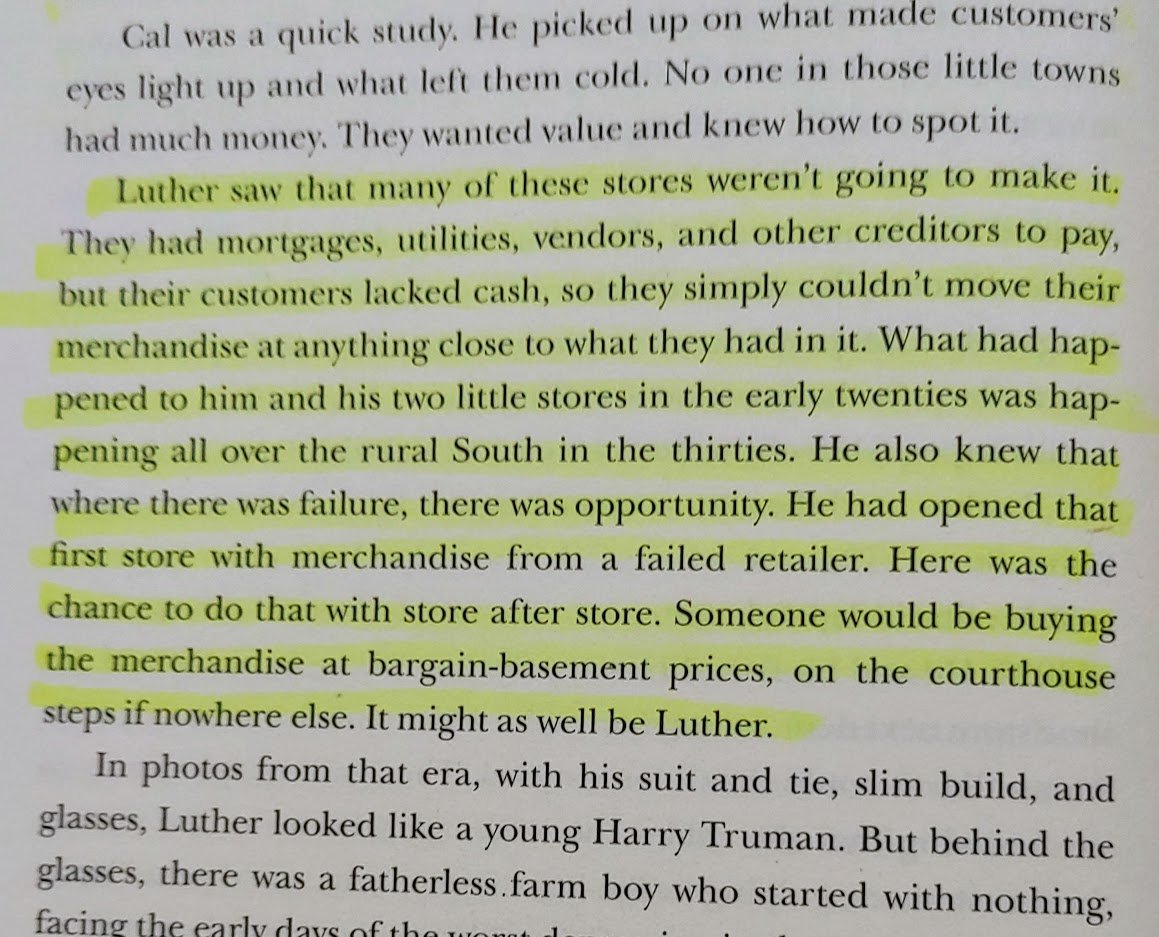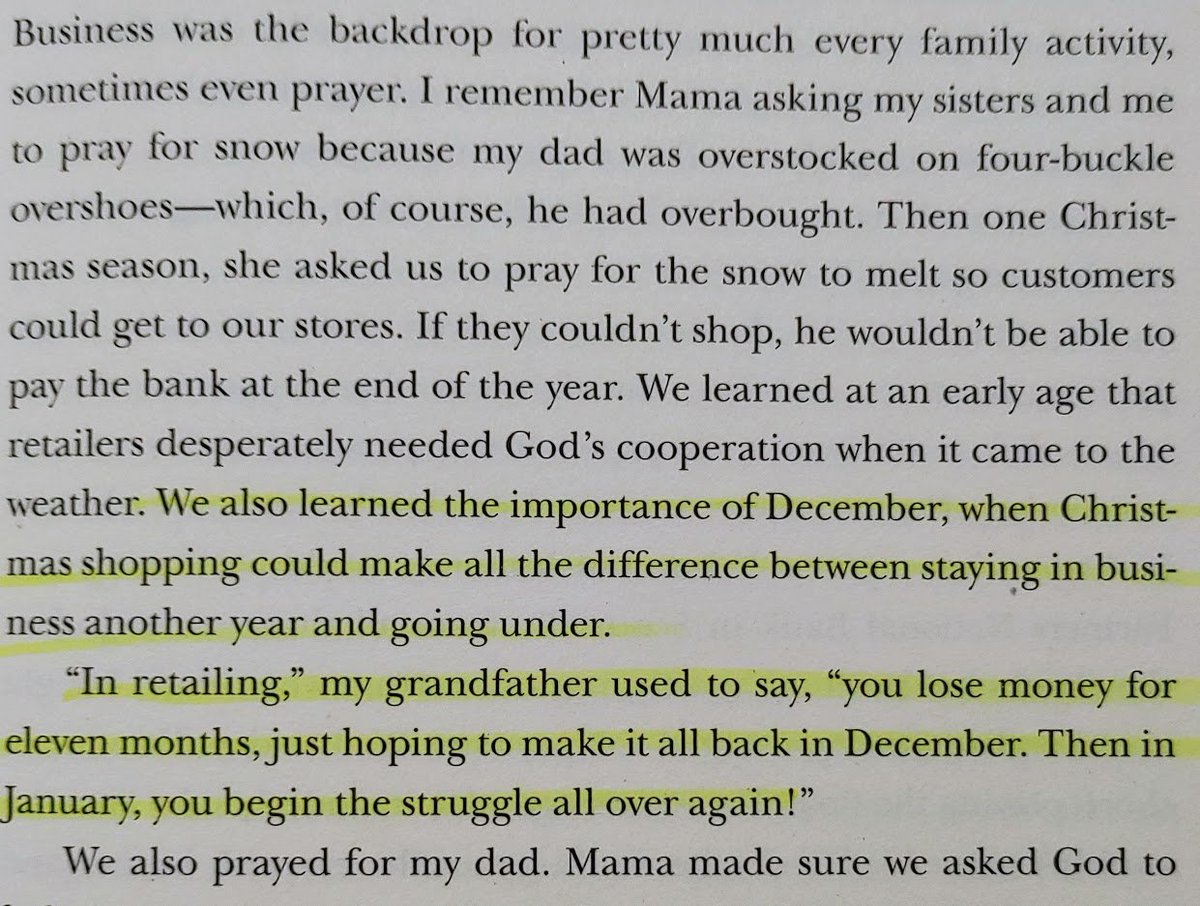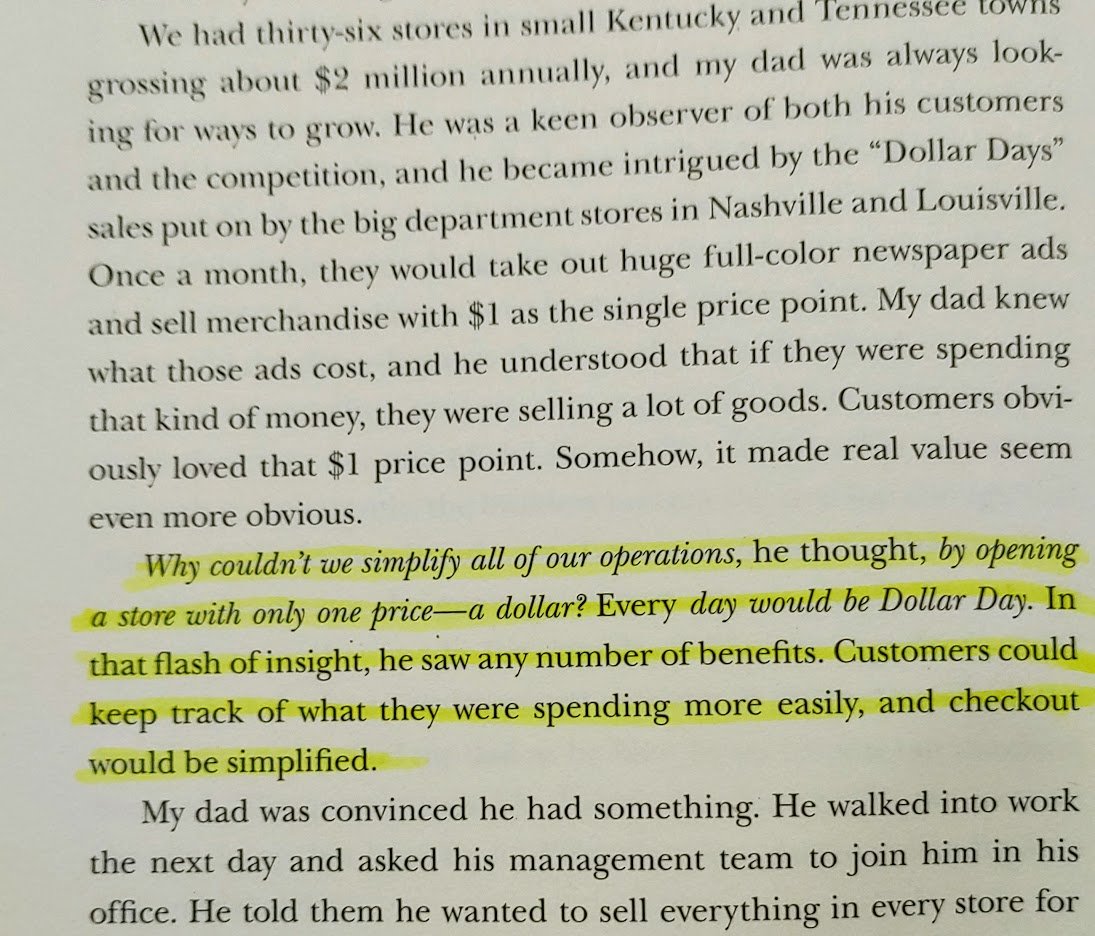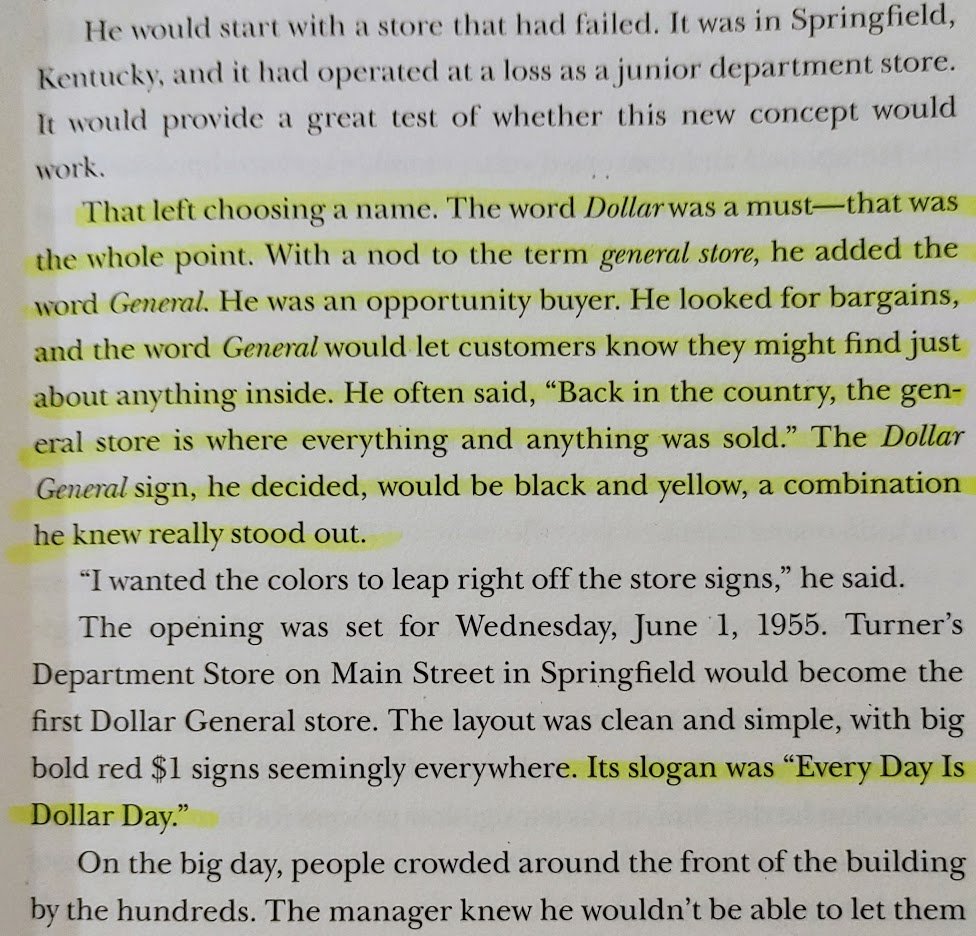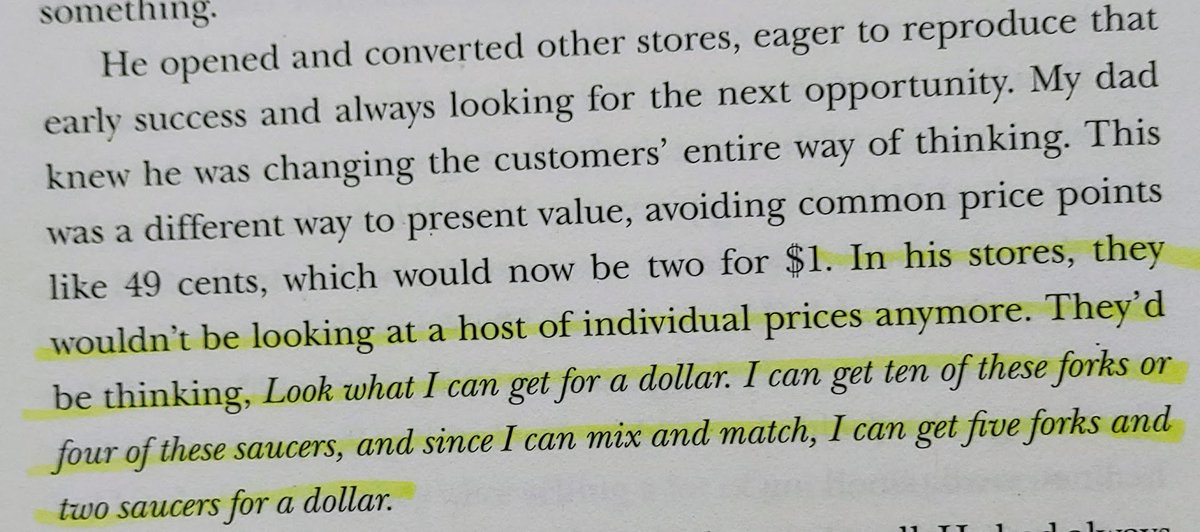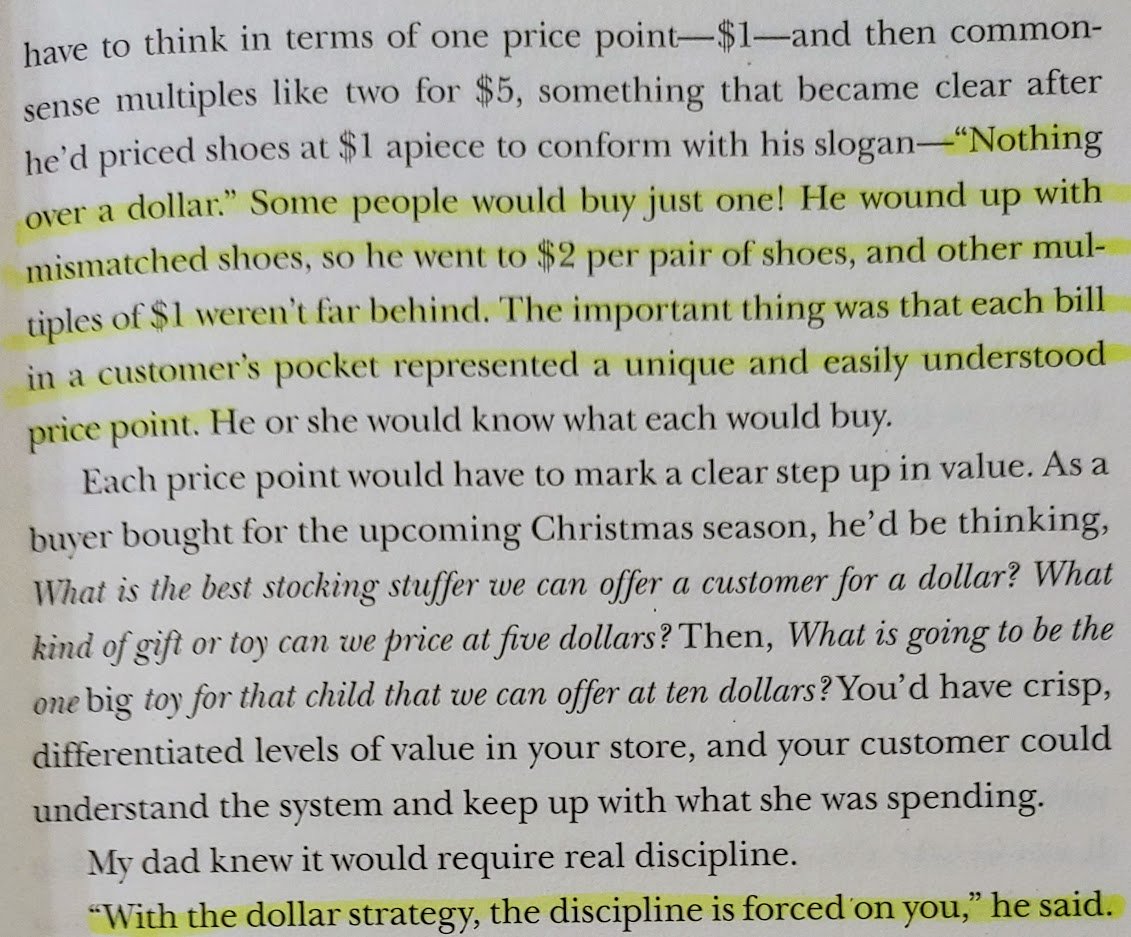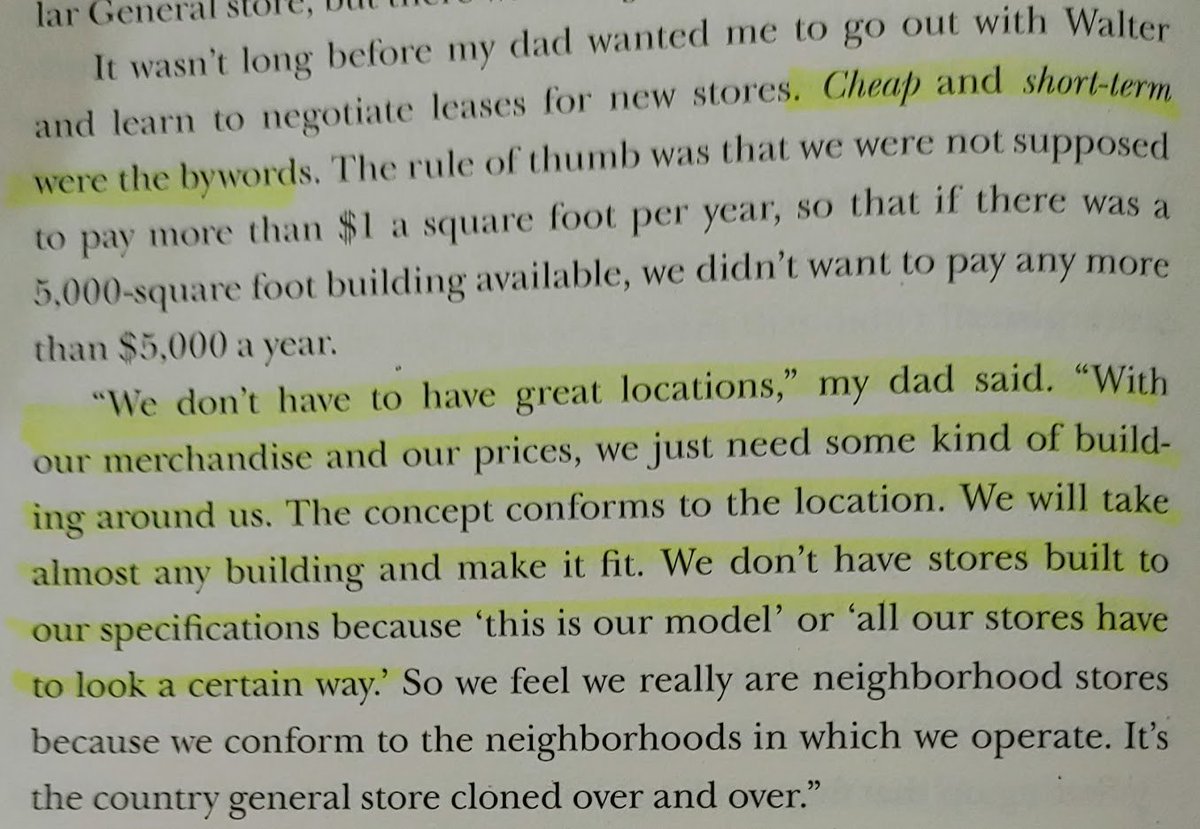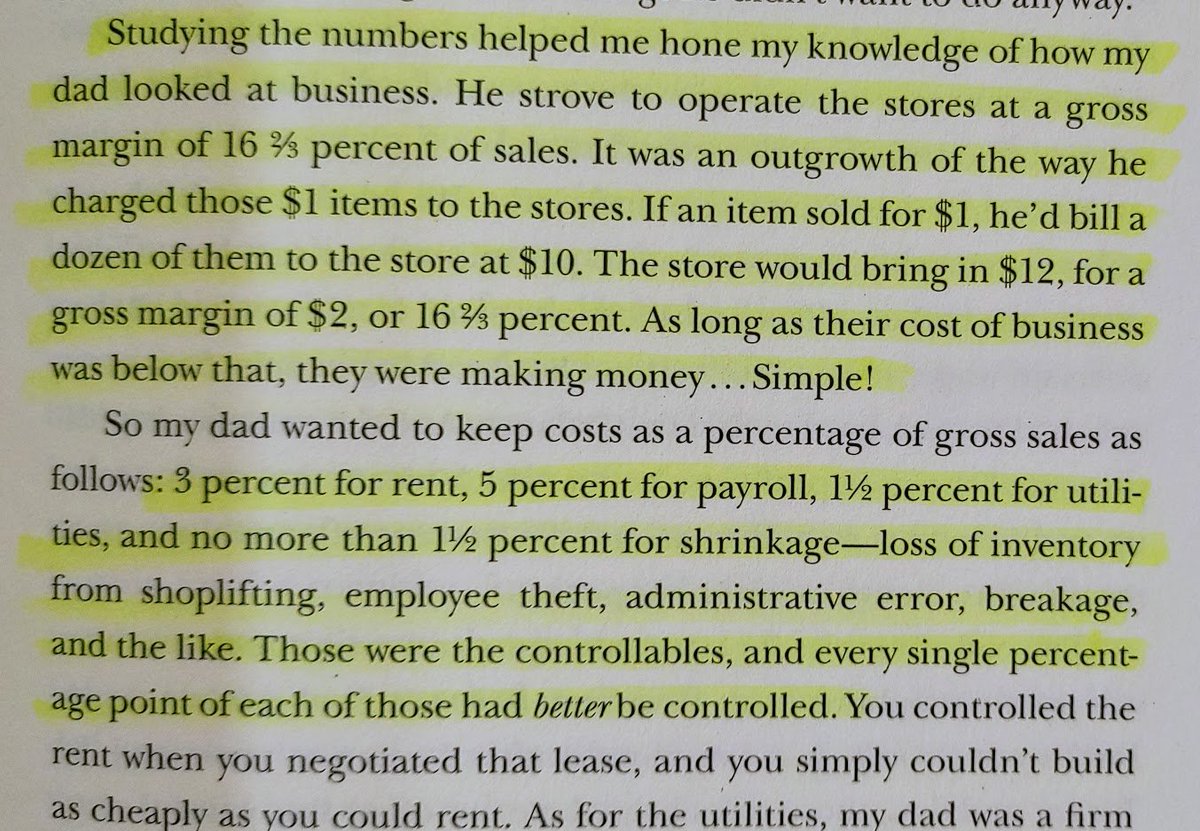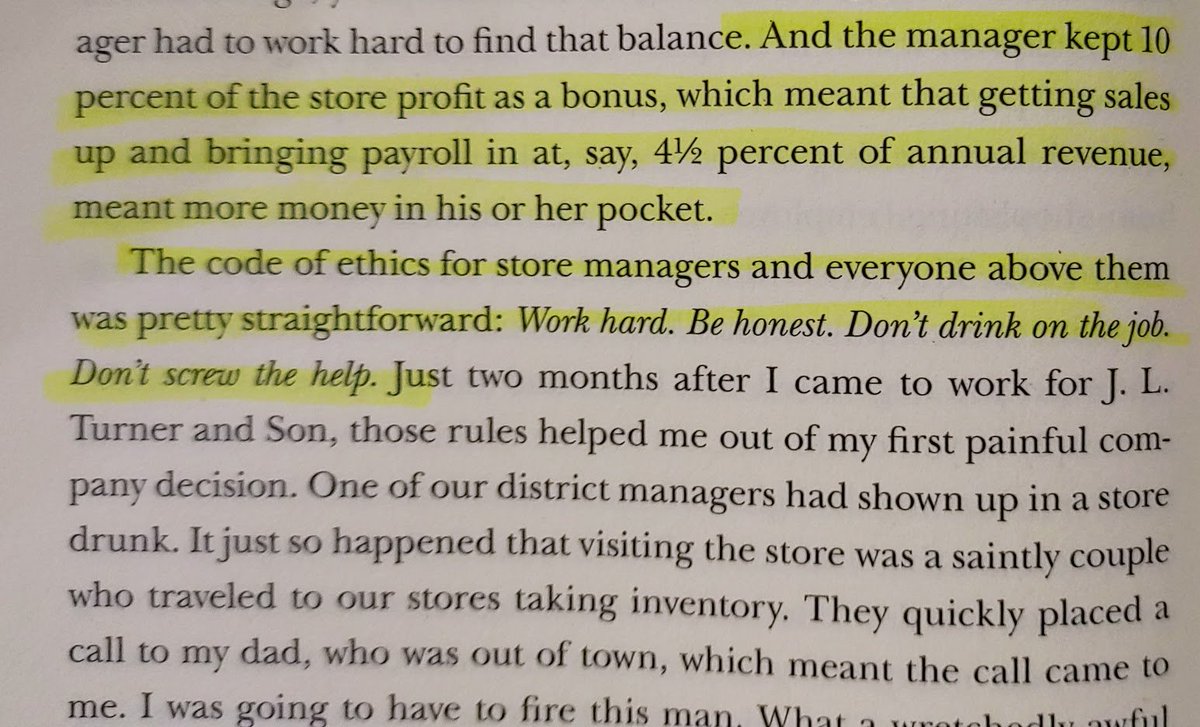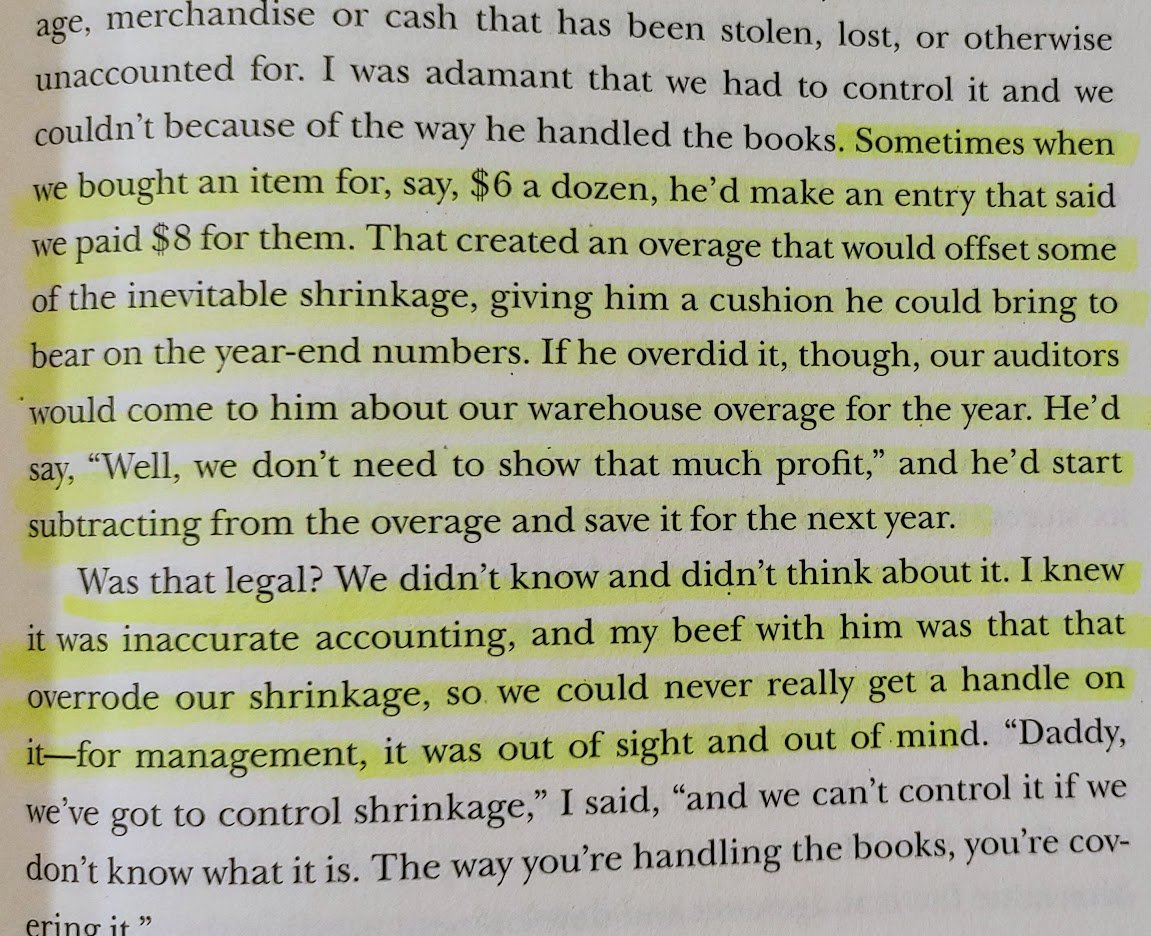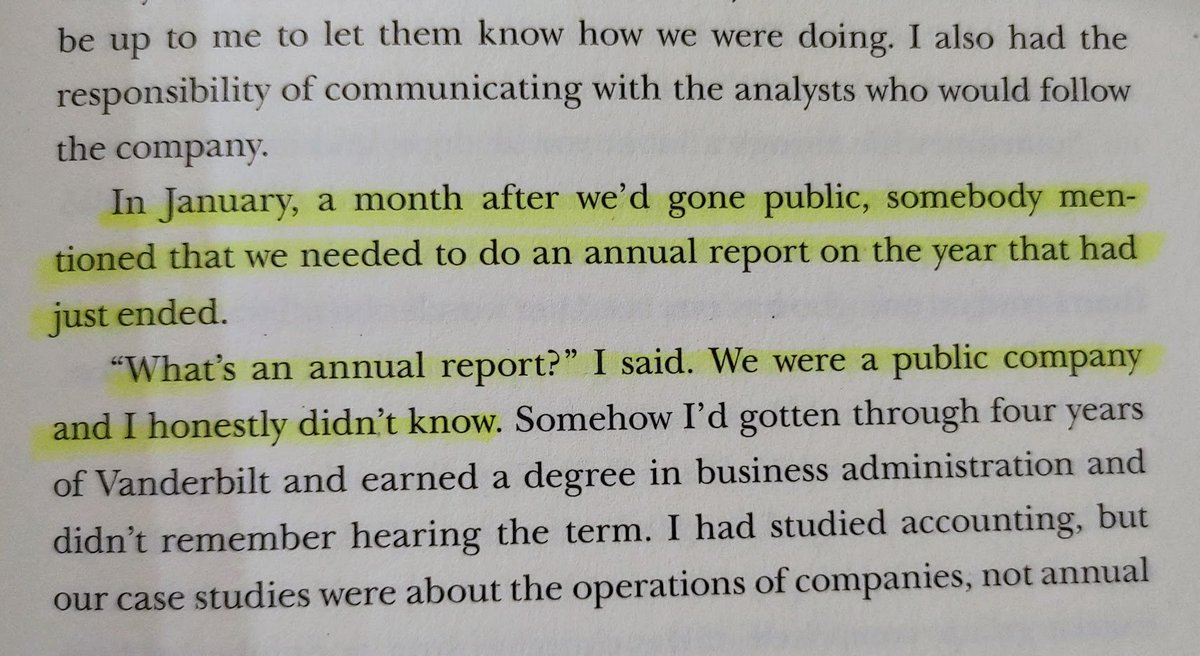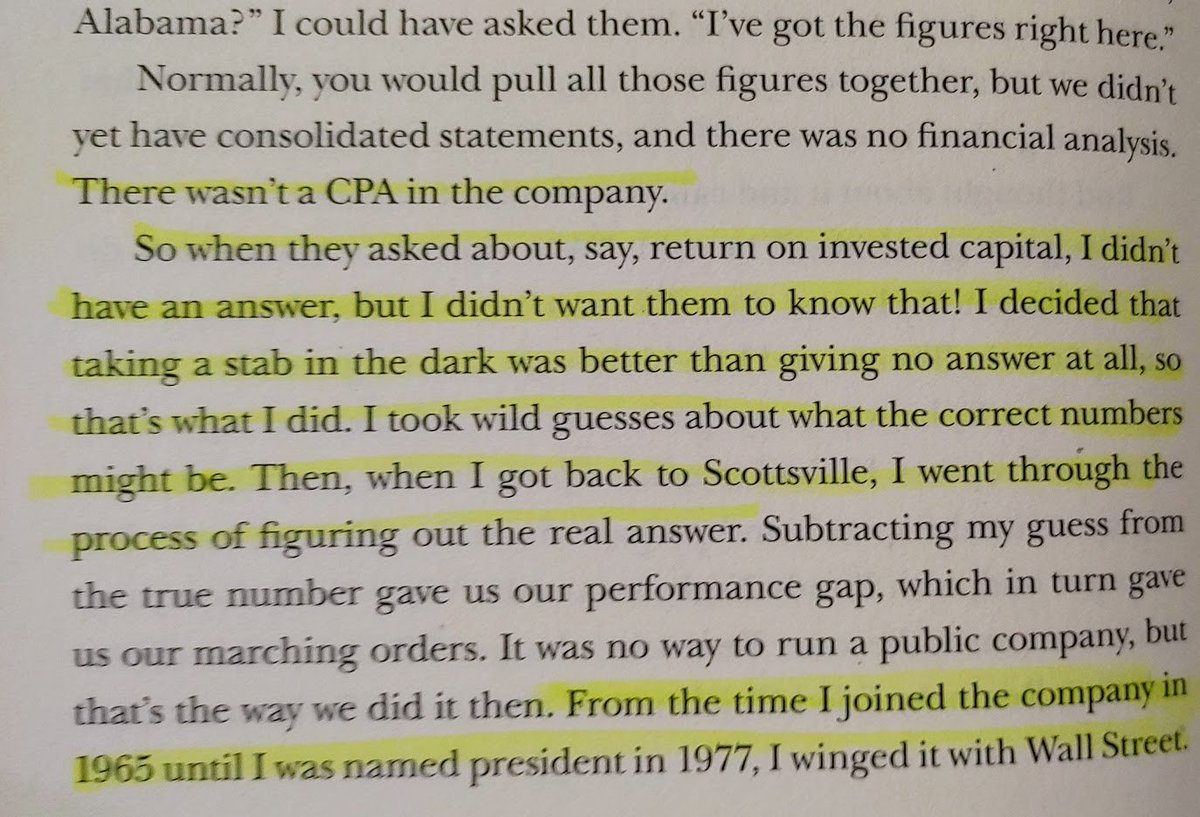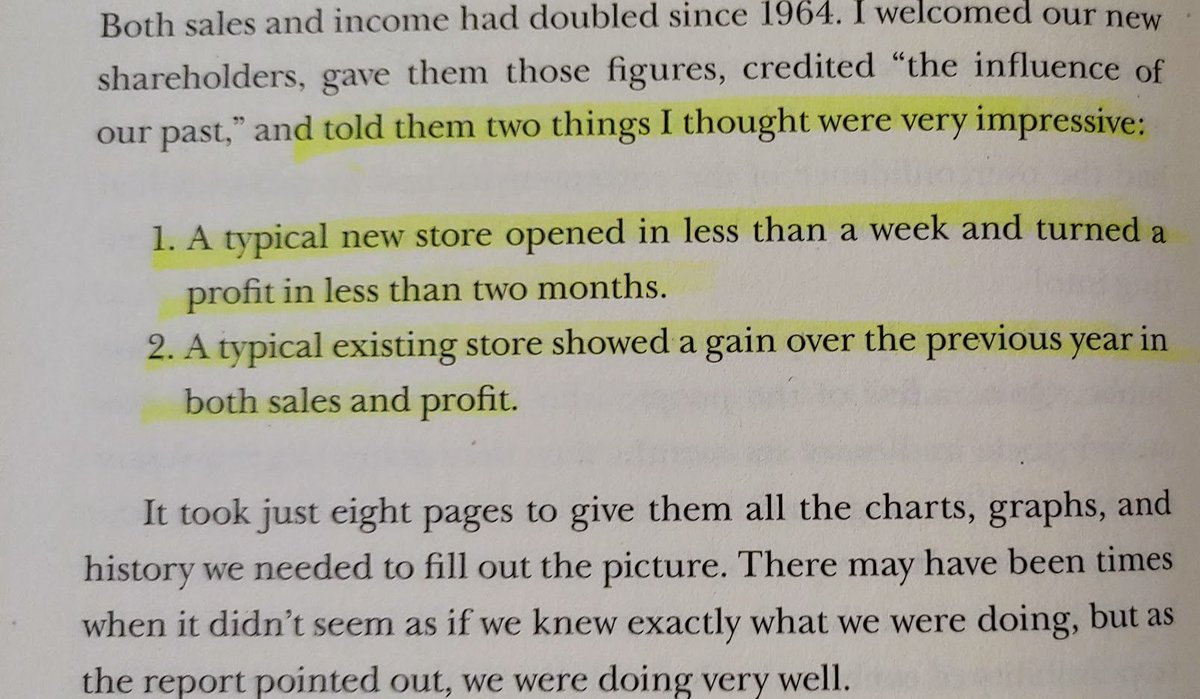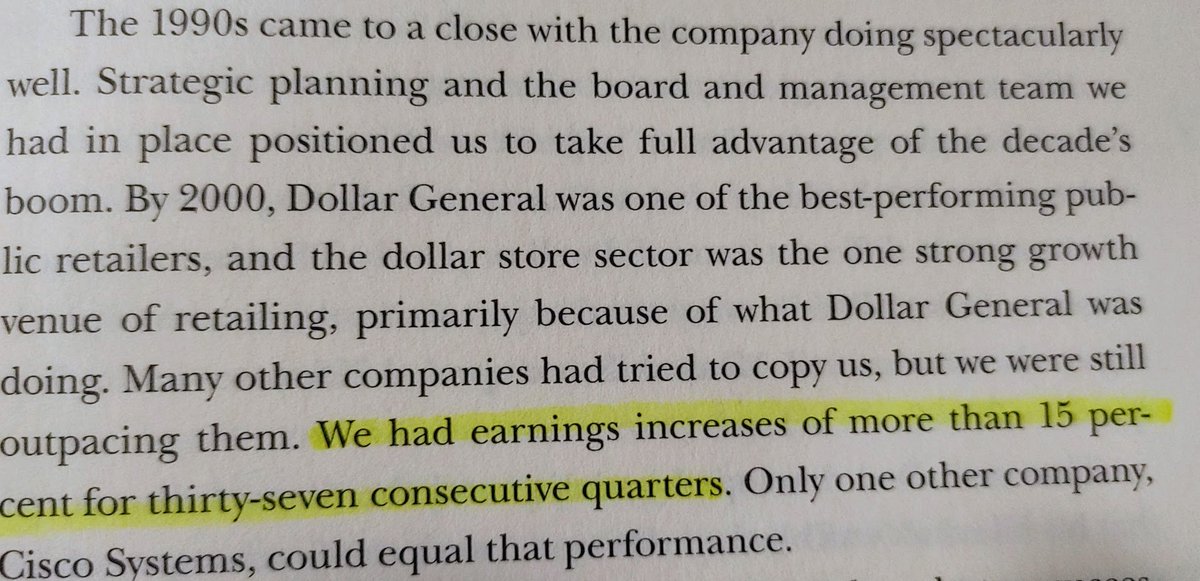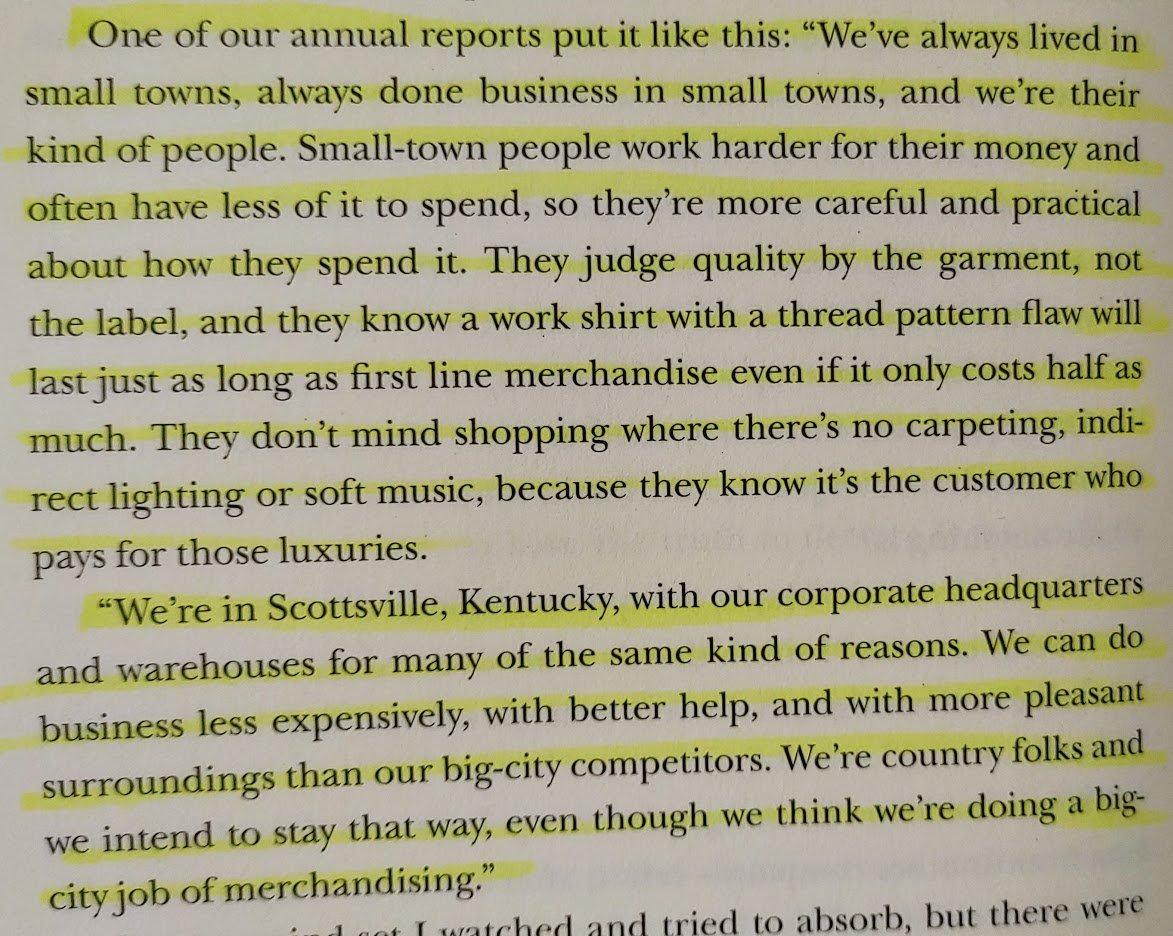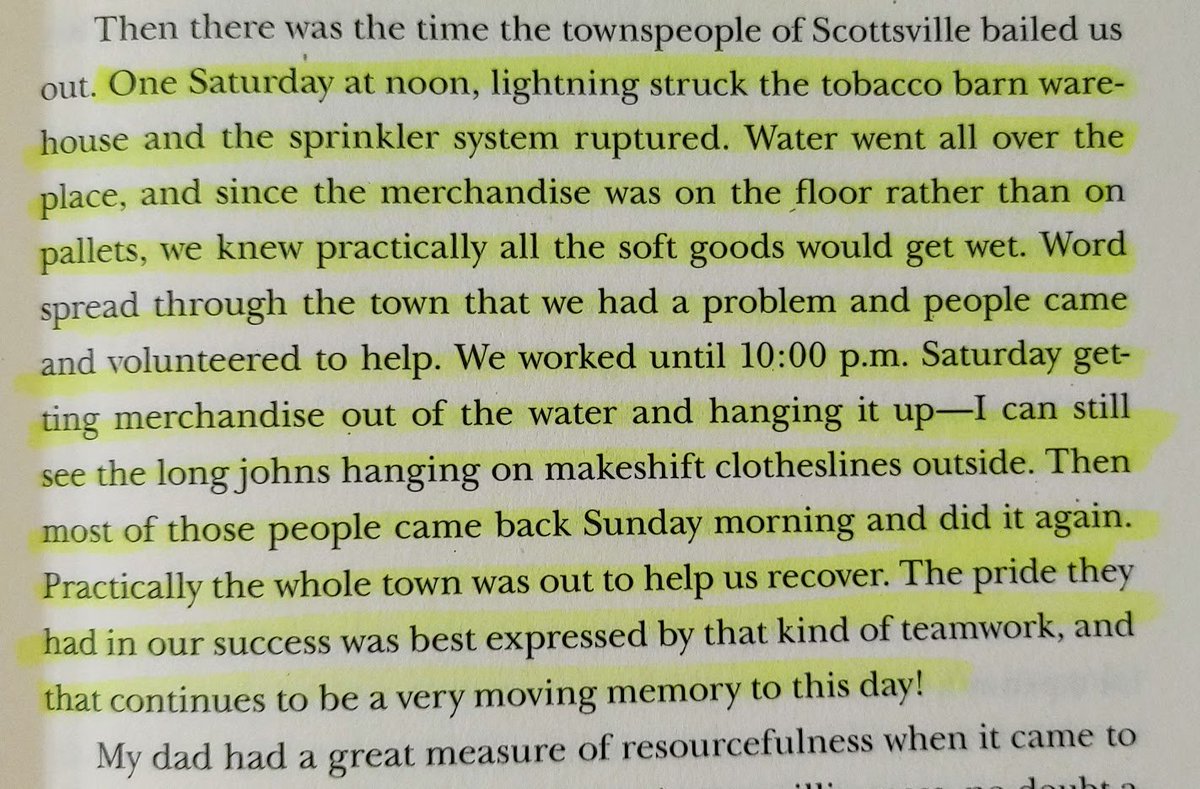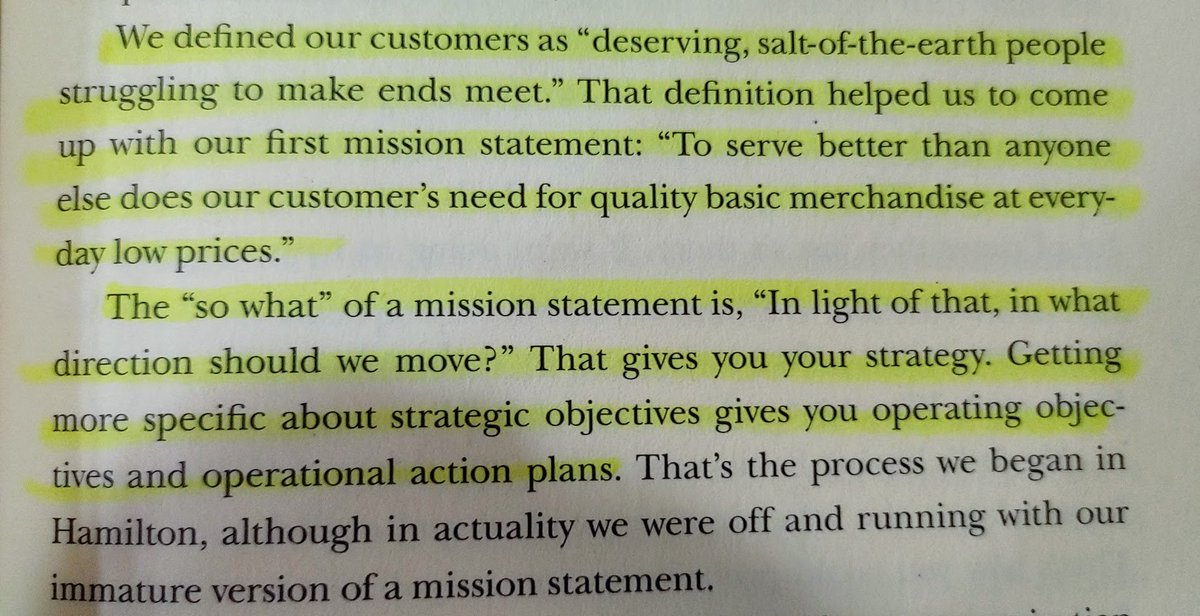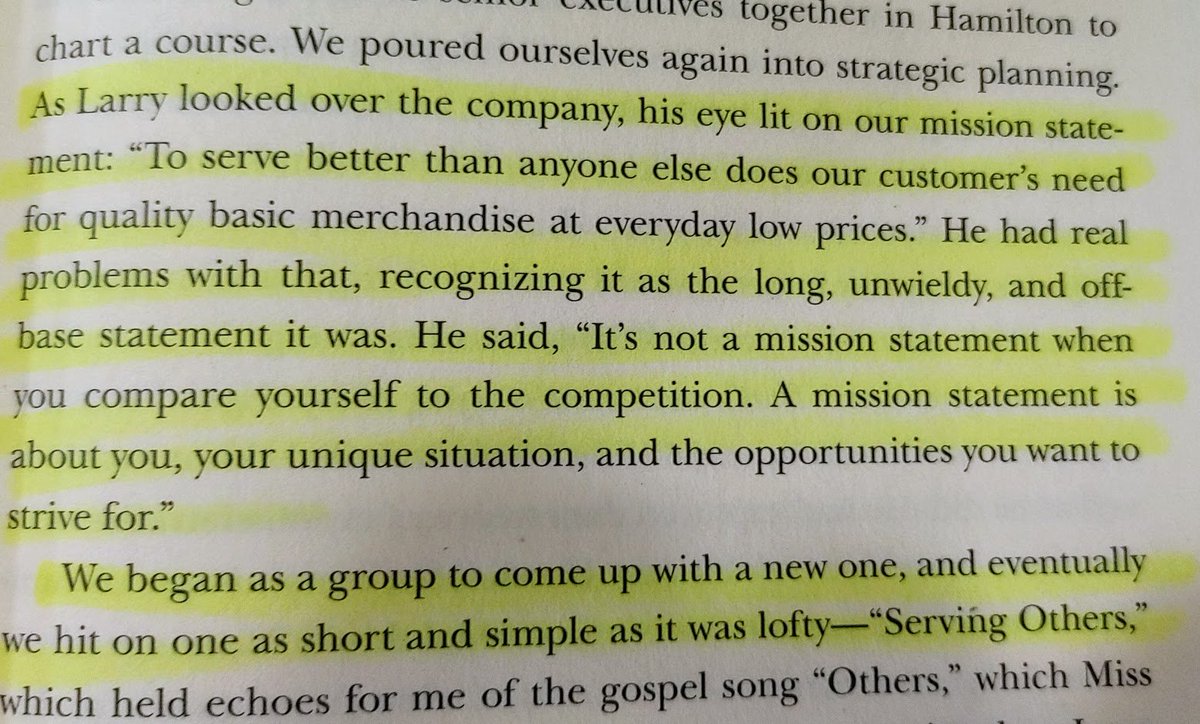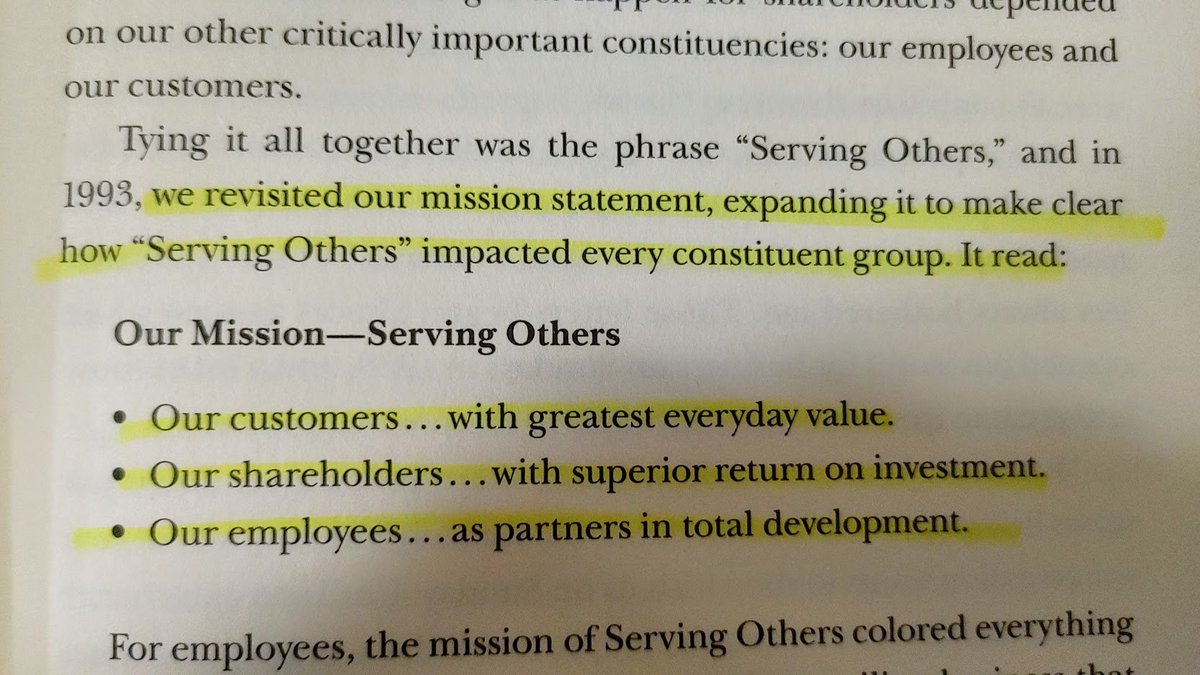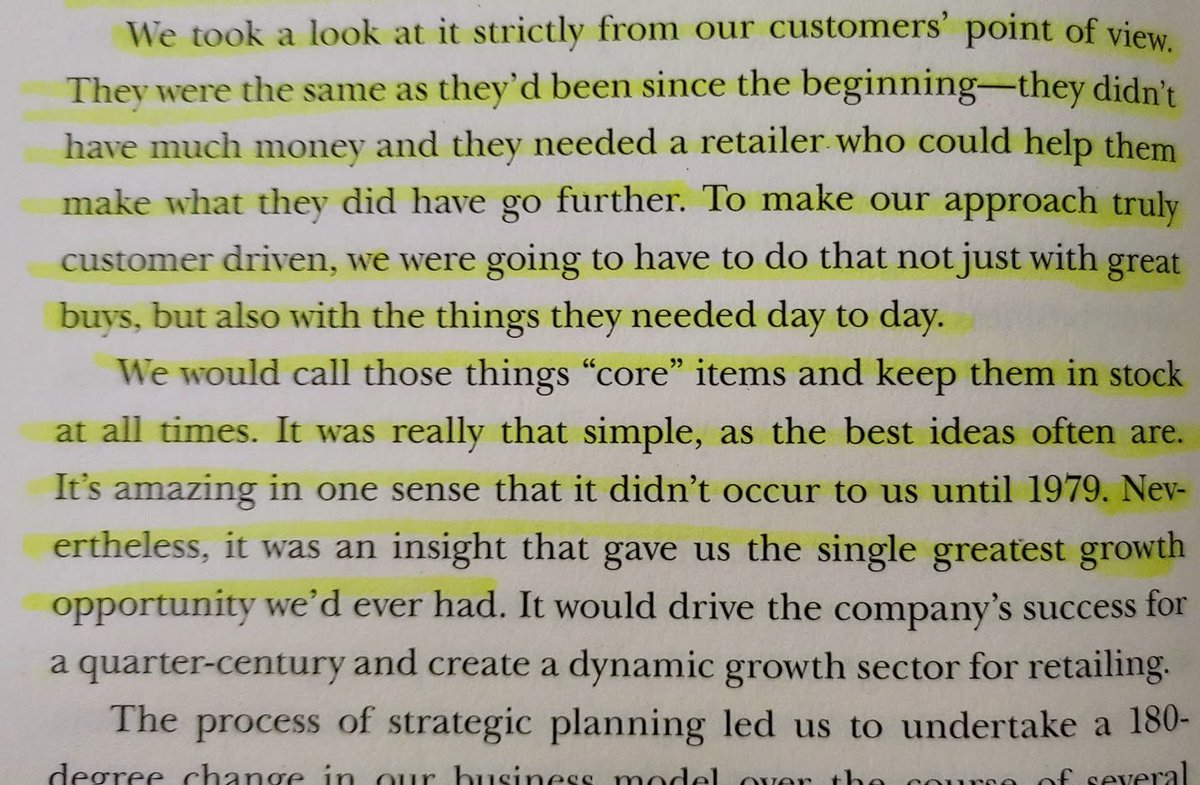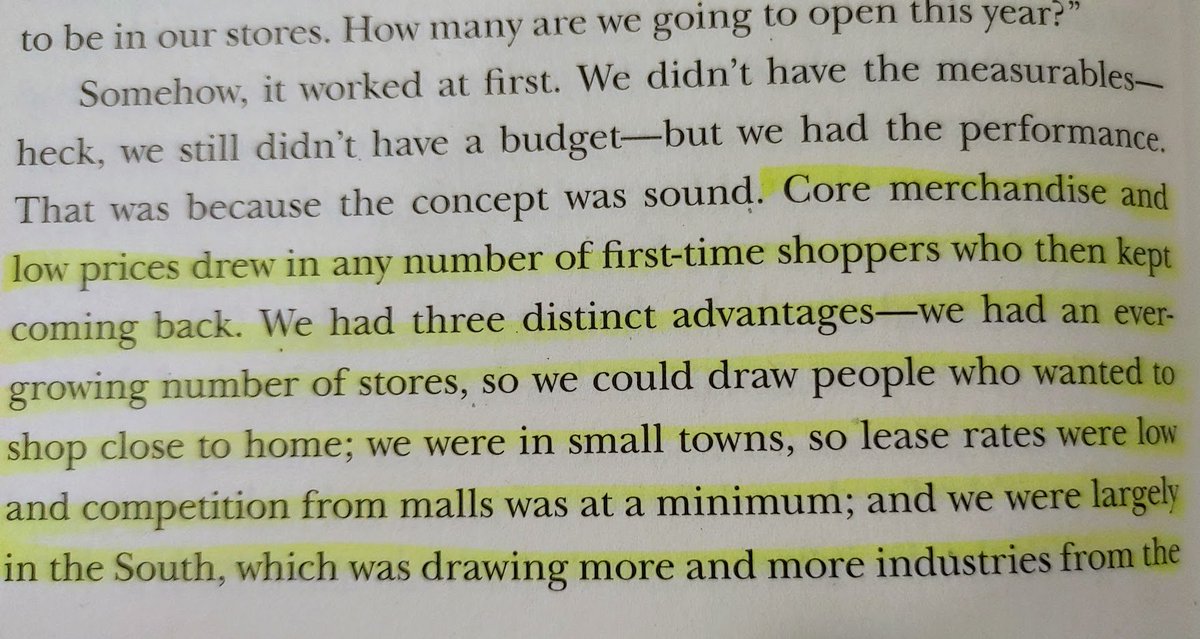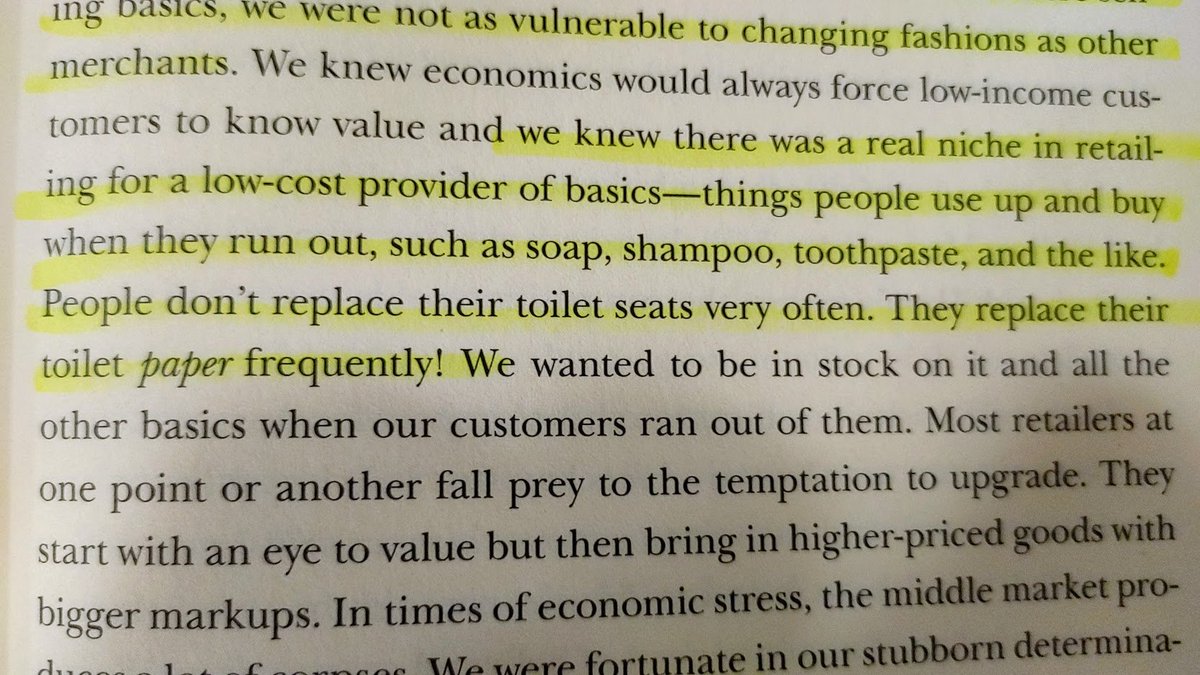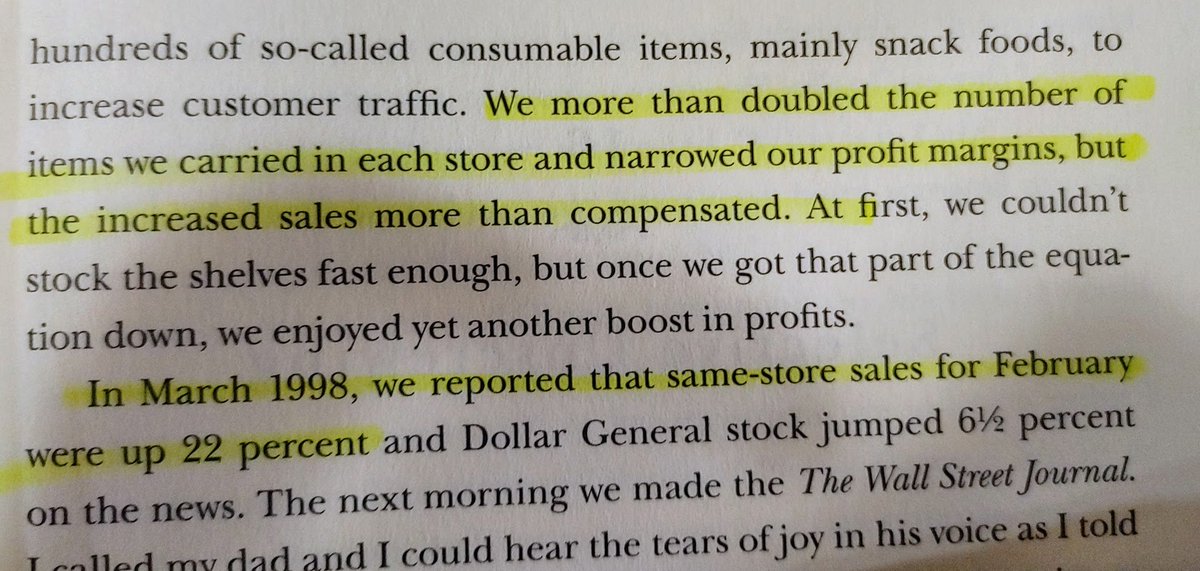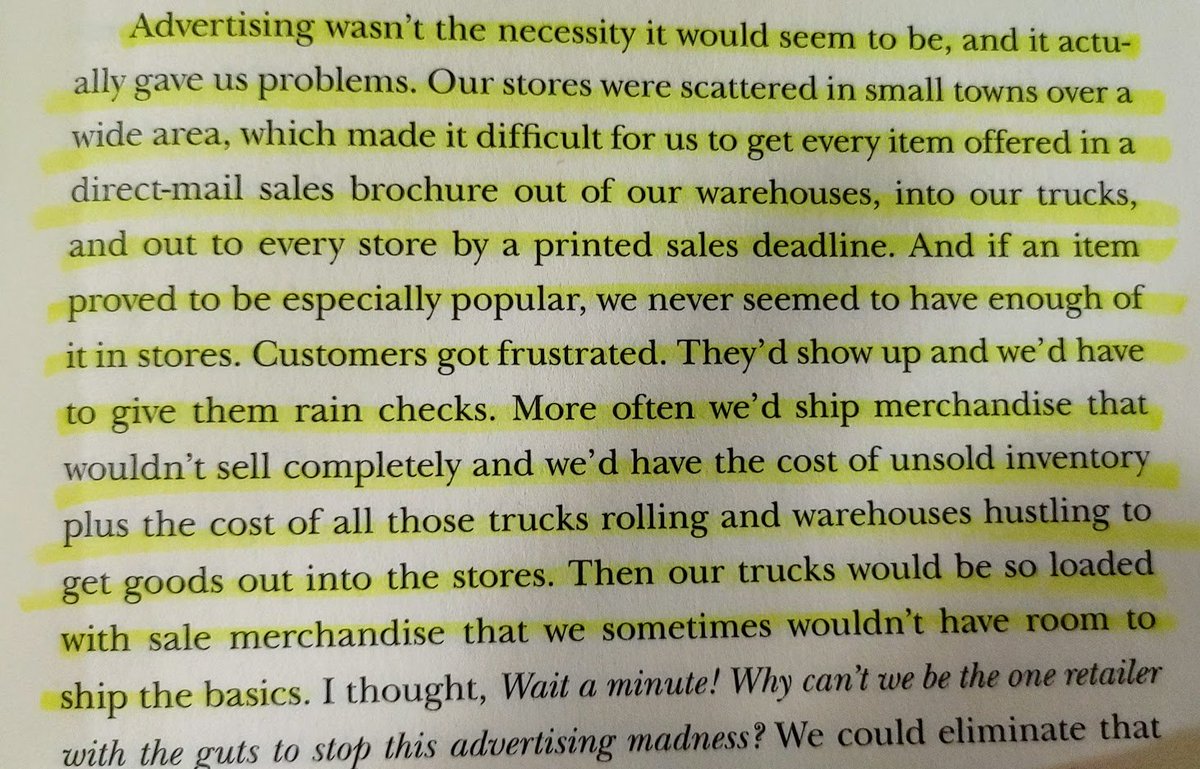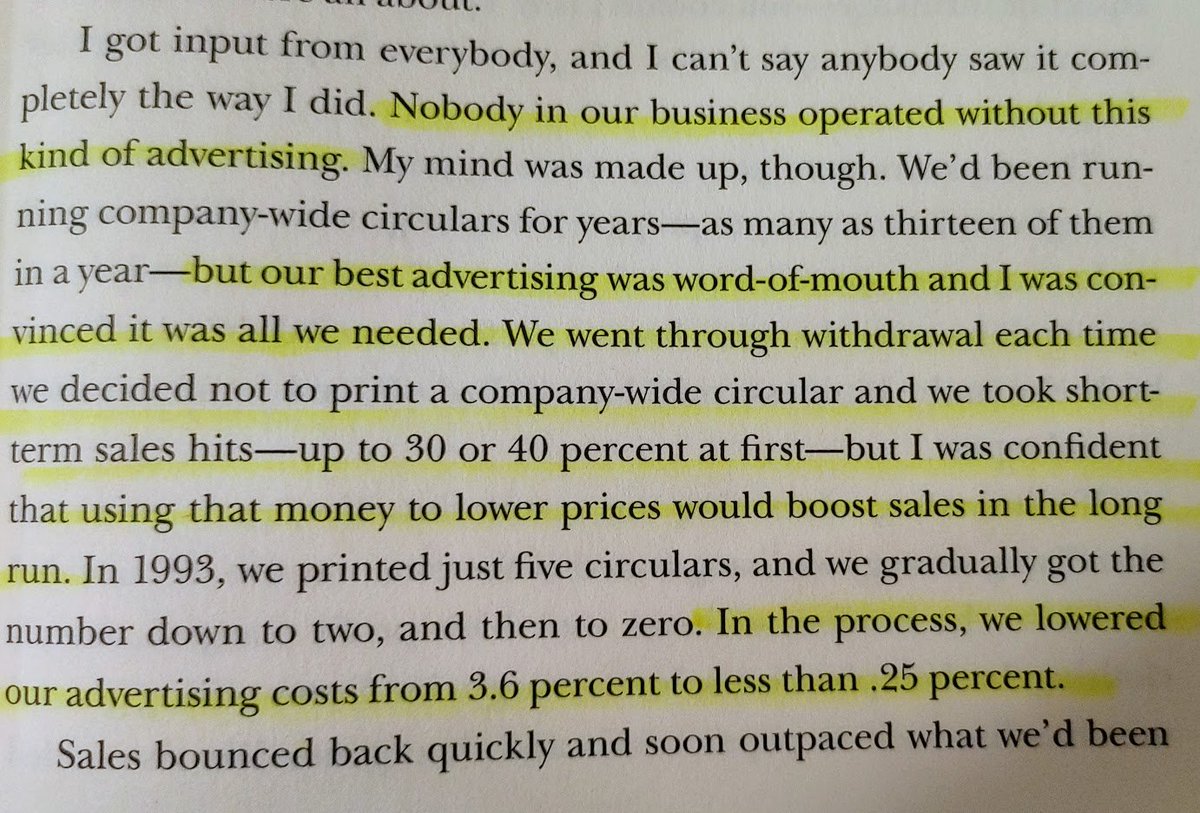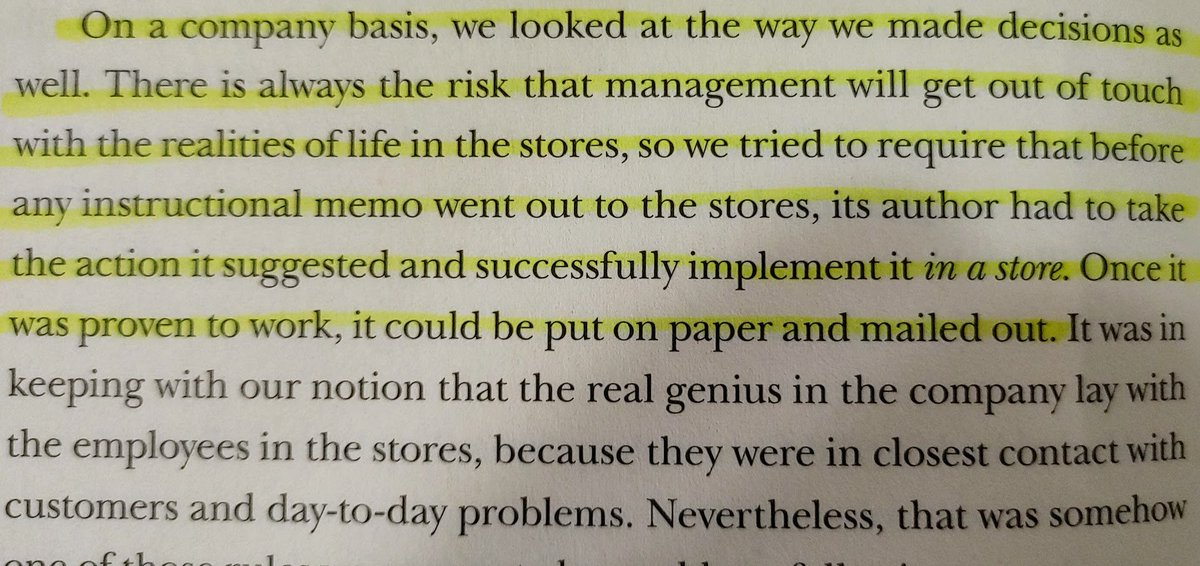1/ Recently finished My Father's Business by Cal Turner Jr. about the rise of Dollar General $DG from a small town discount store to a multibillion-dollar retail giant and really enjoyed it. As w/most books of this genre, there was fluff, but lots of great lessons too. More 

2/ Luther Turner, Cal Jr's grandfather, opened his first store just before the Great Depression. Even though he had a 3rd grade education and could barely read, Luther's store was still successful, mostly by acknowledging he wasn't smart and could learn something from everyone.
3/ As stores started closing after the onset of Great Depression, Luther and his son, Cal Sr, knew they could buy merchandise from closing stores at dirt cheap prices.
The father-son team also learned another valuable lesson: In hard times, customers wanted value above all else.
The father-son team also learned another valuable lesson: In hard times, customers wanted value above all else.
4/ I enjoyed the anecdotes Cal Jr shares of growing up as a kid of retailers who would pray for sales to do well or how even as kid they all understood how important the Christmas shopping season was for their livelihood.
5/ The "aha!" moment came when the Turners were operating 30+ stores in KY and TN. Cal Sr was enamored w/ how $1 sales brought in crowds at big stores and decided to make everything $1. Pros included making the value obvious to customers and a simplified checkout experience.
6/ The Turners started by experimenting with the "everything is $1" concept at one store, but the idea was obviously a huge success, and Dollar General was off to the races.
This is also when the stores were rebranded w/ the Dollar General name.
This is also when the stores were rebranded w/ the Dollar General name.
7/ The $1 price point changed customers' thinking and state of mind while they shopped. There's lots of reasons for $DG's early success, but the psychology that went into this seemingly simple concept surely drove a lot of it.
8/ It didn't take long for $DG to add higher price points, but they tried to keep a simple system in place (e.g. 2 for $5) that made it easy for customers to track and made clear the value they were receiving.
9/ When scouting out new locations for stores, they didn't worry about the location or building. They weren't even concerned about all the stores having the same look at first. Cheap was what they were after.
10/ Amazing how when they first started they used as something as simple as these rough metrics to operate the entire business. While these simple methods would catch up to $DG as it grew, they worked marvelously well for years.
11/ Ha, speaking of simple loved this color on incentivizing managers w/ a profit sharing program and their code of ethics for store managers and employees.
12/ This is still well before the company was public, but this level of eye-balling it and guess-timating important numbers makes my stomach churn. Again, this all caught up with $DG eventually, but the company was marvelously successful for years with these crude methods.
13/ When $DG went public in the late 60s, the added scrutiny came quick and furious. At early meetings w/ analysts, Cal Jr didn't know the answers to some questions, so he made them up!
14/ Still growth covers all sins. The incredible growth $DG would show lasted for decades! In 1964, sales and income doubled. It never took long for the co to show profits on a new store.
Decades later, in 2000, their quarterly growth streak was only matched by $CSCO!
Decades later, in 2000, their quarterly growth streak was only matched by $CSCO!
15/ For decades $DG operated out of Scottsville, KY, where the first store was opened in 1929. Eventually DG moved to "big city" of Nashville, but Turners tried to keep their samllt town roots. Great anecdote about warehouse catching fire and the whole town pitching in to help.
16/ Something @TMFStoffel might appreciate: As $DG grew larger, it first found it needed a mission statement and then, over a period of decades, consistently found they needed to refine their mission. This was a painful process, but DG realized it was needed in order to thrive.
17/ After coming up w/ its first mission statement, $DG had a 2nd big "aha!" moment in 1979: It could serve its customers better by focusing on lower margin core products than higher margin items that weren't as needed.
Despite the lower margins, sales exploded and $DG thrived.
Despite the lower margins, sales exploded and $DG thrived.
18/ Some other interesting thoughts from the book:
Advertising was found to be a superfluous expense that actually contributed to problems (e.g. if a store was out of an advertised product, customers would leave mad).
Advertising was found to be a superfluous expense that actually contributed to problems (e.g. if a store was out of an advertised product, customers would leave mad).
19/ Another interesting tidbit:
Before $DG would enact a new policy/idea from upper management, it had to be tried out in 1 store first to see if there were unintended consequences and to prove it worked.
Before $DG would enact a new policy/idea from upper management, it had to be tried out in 1 store first to see if there were unintended consequences and to prove it worked.
20/ Let's wrap this up before it goes even longer.
In short, I enjoyed the book and loved some of the insights, even if it meant reading through some unnecessary fluff at times.
$DG is an incredible retail powerhouse that rose up from humble beginnings.
In short, I enjoyed the book and loved some of the insights, even if it meant reading through some unnecessary fluff at times.
$DG is an incredible retail powerhouse that rose up from humble beginnings.

 Read on Twitter
Read on Twitter